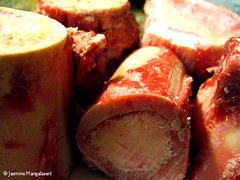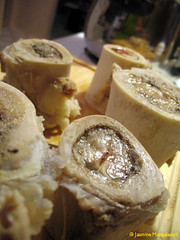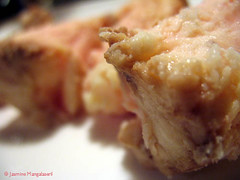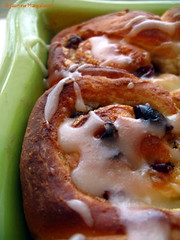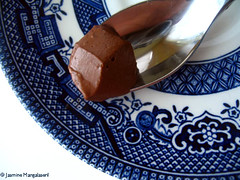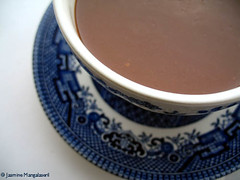 Fat: An appreciation of a misunderstood ingredient with recipes
Fat: An appreciation of a misunderstood ingredient with recipesBy Jennifer McLagan
McLelland & Stewart/Random House Canada
240 pages; $37.95
Fat is vilified. Whether it’s a woman’s natural curves or a recipe’s call for lard, this basic stuff which of which we’re made and need is the same stuff entertainment and corporate-sponsored “food experts” tell us to ostracise and eliminate.
Ironic, this, given in stressful times when we need comfort, we are drawn towards fat (as well as it’s taboo’d compatriots, sugar and fat)—whether it’s a bowl of rich ice cream covered in hot caramel sauce or a bolstering embrace by soft arms.
Jennifer McLagan’s Fat: An appreciation of a misunderstood ingredient with recipes
takes on populist thinking of the past 30-40 years, and tells us that fat, unadulterated by undue processing, needs to regain its rightful place in our diets.
She reminds us that up until the last century, fat was good: we wanted a “fat paycheque” so we could buy the plumpest chicken and those who didn’t get enough fat in their diets were often ill (something I still maintain), as well as what the food industry has done to degrade our collective health such as introducing quantities of trans-fat laidened hydrogenated fats and easily oxidised polyunsaturated oils.
McLagan’s well-written and thoughtful work focuses on four animal fats, some in regular, purposeful home kitchen use, but others not so: butter, pork fat, poultry fat and beef and lamb fat. While photographs do not accompany each recipe, the images provided are vibrant and lovely. The book is also dotted with mini-essays about the importance of fat in history, whether it is pemmican, Haseka “The Butter Saint” or the origins of Fat Tuesday.
What I find most helpful are the instructions for once-common bits of kitchen business such as rendering fats or removing marrow from beef bones, the latter I needed to make her Risotto Milanese. Her no-nonsense words guided me through the process well enough to produce an amazing dish.
As with my other reviews, the proof of a book’s value is in the recipes. Here are the ones I attempted:
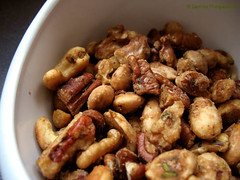 Mixed Spiced Nuts (p36)
Mixed Spiced Nuts (p36)I’m not a fan of processed spiced nuts—manufacturers tend to mistake salt and sugar for flavour. Combining the resinous hints of rosemary, cumin’s and coriander’s smokiness, salt sugar and a bit of heat, these buttered nuts were easy and almost disparagingly deliciously addictive.
 Pumpkin and Bacon Soup (p83)
Pumpkin and Bacon Soup (p83)I liked this soup, but I didn’t love it. It was nearly effortless, but even though smoky bacon and its rendered fat were used, it lacked depth of flavour. I will make this again, but instead of using plain water, I’ll use vegetable or chicken stock or perhaps apple juice.
 Simple Roast Chicken (p138)
Simple Roast Chicken (p138)Often simple is best. McLaglan’s recommendations very closely mimicked my own standard roast chicken recipe, and it produced a bird with juicy meat and crispy, golden skin. My only qualm is I felt 100g of butter was too much, and I’d easily halve the amount.
 Risotto Milanese (p195)
Risotto Milanese (p195)I’ve rarely found a risotto recipe that matches the dish I had in Milan six years ago. McLagan’s recipe uses beef marrow, along with butter to make this perhaps the most luxurious risotto I’ve ever had.
So how does it rate?
Overall: 3.6/5
The breakdown:
Recipe Selection: 4/5
Writing: 3.5/5
Ease of use: 3.5/5
Yum factor: 3.5/5
Table-top test: Lies flat
Kitchen comfort-level: Intermediate
Pro: A good range of recipes ranging drawn from a number of cuisines.
Con: This isn’t a book for those who need or want to be coddled in the kitchen.
cheers!
jasmine
I'm a quill for hire!


